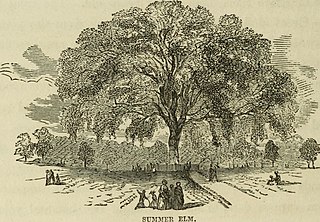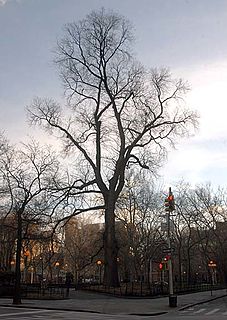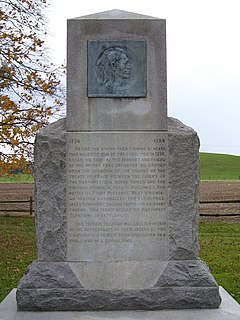 W
WThe Bentinck Street Elm Trees is a heritage-listed row of street trees at Bentinck Street, Bathurst, Bathurst Region, New South Wales, Australia. The property is owned by Bathurst Regional Council. It was added to the New South Wales State Heritage Register on 2 April 1999.
 W
WThe cutting of the elm was a diplomatic altercation between the kings of France and England in 1188, during which an elm tree near Gisors in Normandy was felled.
 W
WThe Great Elm stood at the center of the Boston Common until February 15, 1876. The earliest maps of the area only showed three trees, one of which was the Great Elm. The other two trees, one of which was most likely the famed Liberty Tree, had been lost long before the Great Elm finally fell in the nineteenth century. Up to that point, the elm symbolized the Boston Common's landscape since—an early advocate for urban improvement asserted—the figure represented the finest example of "the favorite ornamental tree among us." The Great Elm's popularity inspired broader environmental efforts within the region. Consequently, planters believed that they "must plant [elms and oaks] for posterity," implicitly hoping that their efforts would result in a similar majestic outcome. These ancillary planting efforts elevated the popularity of the largest tree in the area, the Great Elm.
 W
WHangman's Elm, or simply "The Hanging Tree", is an English Elm located at the northwest corner in Washington Square Park in Greenwich Village, Manhattan, New York City. It stood at 135 feet tall when last measured nearly 35 years ago, and has a diameter of 67 inches.
 W
W"Herbie" was an American elm tree located in Yarmouth, Maine. It stood by present-day East Main Street, at its intersection with Yankee Drive, for 217 years. At 110 feet in height, it was, between 1997 and the date of its felling, the oldest and largest of its kind in New England. The tree, which partially stood in the front yard of a private residence, also had a 20-foot circumference and a 93-foot crown spread. It was so-named when children witnessed some of its diseased limbs being sawn off. "What are you going to do to Herbie? Don't cut Herbie!" they cried, and the name stuck.
 W
WThe Liberty Tree (1646–1775) was a famous elm tree that stood in Boston near Boston Common, in the years before the American Revolution. In 1765, colonists in Boston staged the first act of defiance against the British government at the tree. The tree became a rallying point for the growing resistance to the rule of Britain over the American colonies, and the ground surrounding it became known as Liberty Hall. The Liberty Tree was felled by Loyalist Nathaniel Coffin Jr. in August 1775.
 W
WThe Logan Elm that stood near Circleville in Pickaway County, Ohio, was one of the largest American elm trees recorded. The 65-foot-tall (20 m) tree had a trunk circumference of 24 feet (7.3 m) and a crown spread of 180 feet (55 m). Weakened by Dutch Elm Disease, the tree died from storm damage in 1964. The Logan Elm State Memorial commemorates the site and preserves various associated markers and monuments.
 W
WThe Old Treaty Elm marked the Northern boundary of the Fort Dearborn Reservation, the approximate edge of the Billy Caldwell Reserve, and the trail to Lake Geneva. The tree was located in the Sauganash neighborhood of Chicago, Illinois, and stood until 1933. The marker is placed several feet west of the actual location of the trunk of the tree, which stood approximately in the middle of what is now Kilbourn Avenue, just north of Rogers Avenue, which is the Old Indian Boundary Line.
 W
WThe Preston Twins were a pair of English elm trees that grew in Brighton, England at the northern end of Preston Park. They were planted around 1613 and were "almost certainly" planted as part of a hedgerow. Believed to be among the oldest and largest English elm trees in the world, they reached heights of more than 100 ft (30 m) and widths of 23 ft (7.0 m). An outbreak of Dutch elm disease in England in the late 1960s caused Brighton to enact several measures to protect its 17,000 elm trees, including setting traps for the beetles that spread disease. They also dug trenches between neighboring elms to prevent the disease from passing easily from tree to tree via their root systems. Infected branches were pruned and destroyed in efforts to save trees.
 W
WThe Washington Elm was a tree on Cambridge Common in Cambridge, Massachusetts that lived approximately 210 years and died in 1923.
 W
WWiedźmin is a European White Elm tree, one of the largest elms in Europe. It is located in Komorów, Lubusz Voivodeship, Poland.